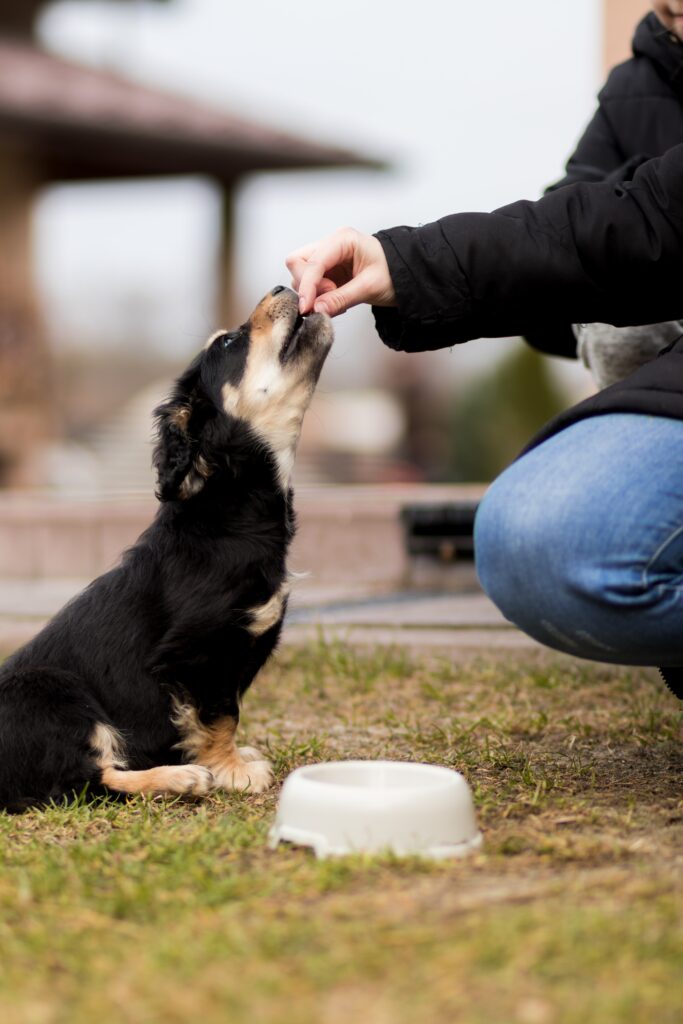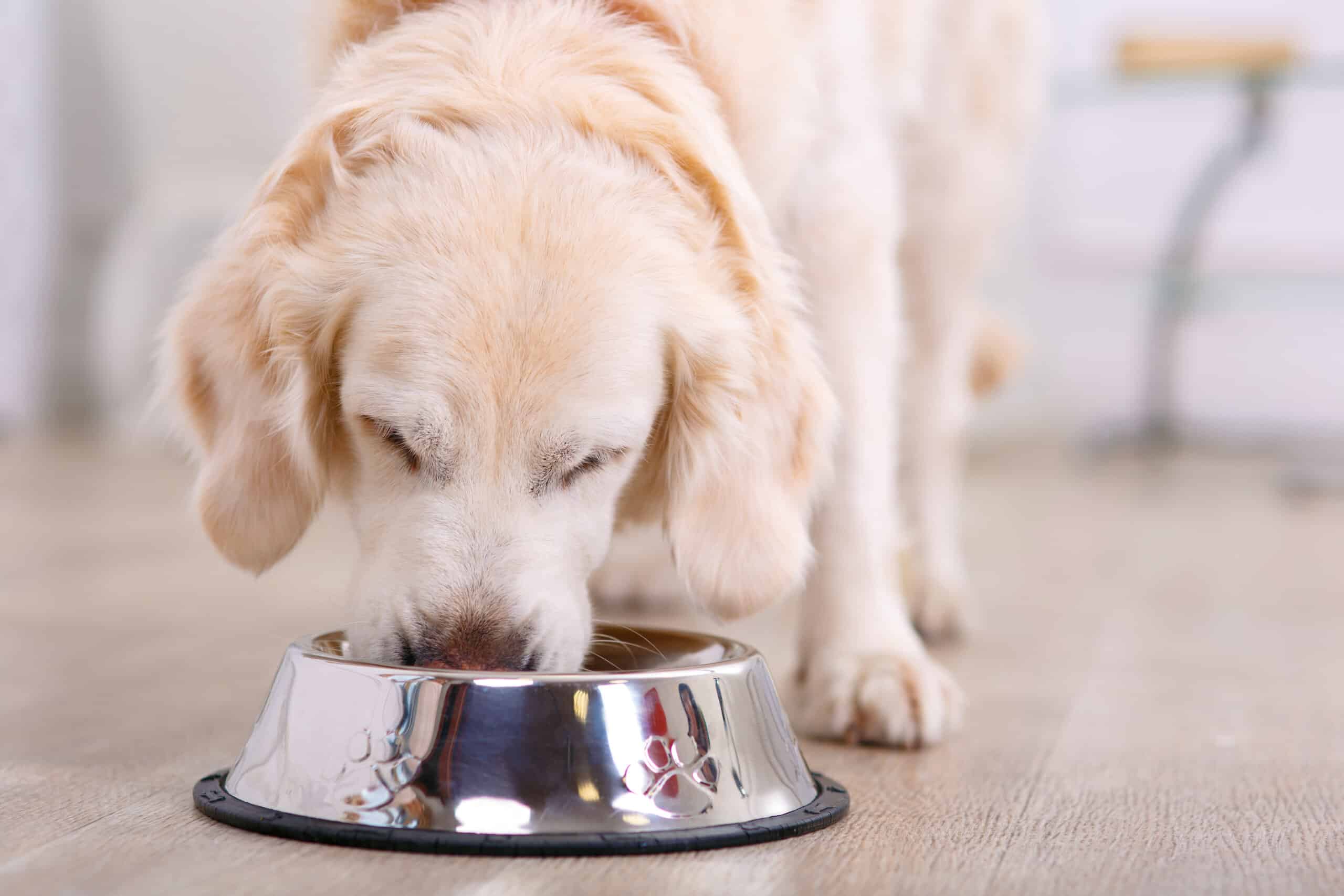Your dog food has a very large impact on health, behavioural issues, and overall quality of life. But for new owners, it can be very tricky what to feed your dog. It can be difficult to choose the right dog food and make sure your dog gets all its required nutrients in the right quantity.
Thank you for reading this post, don't forget to subscribe!Dog Food Labels in the UK
Labels are split into two parts: the ‘Principal Display Panel’ and the ‘Information Panel’. The ‘Principal Display Panel’ shows the name and brand of the dog food. The ‘Information Panel’ contains details about the ingredients, guaranteed analysis, a statement about the nutritional value, and feeding recommendations.
If your dog food says it’s complete and balanced, it suggests that the product has all of the nutrients a dog needs in the right amounts. This complies with the guidelines established by the European Pet Food Industry Federation (FEDIAF) and The Association of American Feed Control Officials (AAFCO).
Raw Diet vs Commercial Diet
Raw Diet and Commercial Diet are the two most common diets fed to dogs. However, a dog owner who feeds raw diet to a dog will very rarely or never feed commercial diet to their dog and the opposite is true for owners who feed commercial diets to their dog. Both these types of diets have some benefits and drawbacks.
Feeding your dog a raw diet entails giving him raw meat, bones, produce, and fruits. Advocates contend that this is the diet that dogs are designed to eat naturally. Shinier coats, healthier skin, cleaner teeth, more vitality, and smaller stools are a few advantages of a raw diet. Some of the dangers of raw diet are complete bones, an unbalanced diet that may be harmful to the health of dogs if fed for an extended length of time, and risks to the health of humans and dogs from bacteria in raw meat.
Commercial diets are practical, well-balanced, and offer a variety of flavours to keep our pets interested. They are typically cheaper as well. The drawback of these foods is that they could contain preservatives and fillers, which can eventually lead to oral issues.
Asking a vet could give you a good idea on what to feed your dog.
Cold Pressed Dog Food
Dog food is usually made on very high temperatures. This can destroy some of the nutrients so our dog will not get all the benefits.
Cold-pressed dog food is made on lower temperatures, around 45-75 degrees Celsius. It is comparable to slow preparing a meal for your pet. This gives your dog a meal that is easy for him to digest and enjoy while this mild cooking technique preserves the priceless vitamins and minerals.
Cold-pressed dog food can be called the “superfood” of the canine diet. Your pet’s mealtimes will be full of natural deliciousness that will give them a boost in nutrients. However, they should be given in moderation. In terms of calories, cold-pressed food is more calorie-dense than typical dog food. So, pay close attention to those portions to keep your dog in shape. It is also a little bit more expensive than typical dog food. Additionally, since of the way it is prepared, it might not last as long in your cabinet as regular dog food.
Nutritional Requirements for a Dog
Your dog needs to eat a balanced diet that includes protein, lipids, carbohydrates, vitamins, and minerals, all of which should be consumed alongside a constant supply of clean water.
Since they are omnivores, dogs can eat both plants and animals, however, vets recommend making a major portion of your dog’s diet meat. Around two-thirds of your dog’s daily food intake should be meat.
Essential Nutrients
Proteins
One of the most crucial elements in sustaining healthy growth throughout a dog’s life cycle is dietary protein. The building blocks of life, proteins are essential for immune system health, tissue repair, and growth. Protein is at work whenever your dog playfully zoomies or develops lustrous, healthy fur.
Protein is a terrific energy source for active puppies who haven’t yet started to slow down and enter adolescence, therefore growing puppies need around twice as much protein as adult dog’s need. Great sources of protein include meat, fish, eggs, and dairy products.
Carbohydrates
Healthy carbohydrates aid in providing dogs with essential vitamins, minerals, and antioxidants. It is advised that these carbs contain a lot of fibre, which is increasingly understood to be good for a dog’s health.
Dog safe fruit and vegetables, rice, corn, and wheat are excellent sources of carbohydrates.
Fats
In the right amounts, fats offer the most concentrated form of food energy. The proper fats can help to maintain glowing dog coats and good skin, as well as reducing inflammation and promoting brain growth.
Dogs must consume specific foods and supplements in order to obtain vital fatty acids like omega 3 and 6 oils because they are unable to produce them on their own. Low-mercury fish and fish oil, olive oil, flaxseed oil, hemp seed oil, avocado flesh, borage oil, and rosemary oil are excellent sources of healthful fats.
Vitamins
Just like us, vitamins are crucial to a dog’s health. Some dog diets don’t contain enough of a dog’s daily natural vitamin requirements since some food production processes entail cooking food at high temperatures.
The main vitamins that are important for dogs include Vitamin A, B, C, D, E and K. Meat, bone, seafood, organ meats, as well as vegetables and fruit, are great providers of vitamins.
Minerals
Minerals support a variety of bodily processes and functions, including metabolism, skeletal development, muscle, bone, and tooth growth, among others. Puppies that are growing need to obtain enough minerals because their bodies require these nutrients for optimal growth at this time of life.
It is a good idea to look for dog food options with greater ash concentrations when comparing various dog food options because “ash” is the term used to assess the amount of minerals found in food.
Water
Water accounts of 60-70% of a dog’s body weight. The key to a wagging tail and a healthy puppy is keeping your dog well-hydrated.
In general, experts advise that dogs should have one ounce of water per pound of body weight each day.
Guide to Feeding Your Dog
Based on their age, size, health, and activity level different dogs need different amounts of food. Generally, a dog should be fed 2-3% of their body weight spread out between 3 meals a day.
Raw Diet is commonly considered the best food for dogs. However, everyone may not be comfortable with raw food. In addition to providing some fantastic health benefits, cold-pressed and freeze-dried kibble foods are a great alternative to a raw diet. If you do choose to feed your dog kibble, make sure it is the best and highest quality you can purchase. You should also take the time to consider adding extra fruits and veggies, a raw egg, or even some oily salmon as a nutritious topping.
Tips for Dog Nutrition
- Organic fruit, veg and grass-fed meats are the best possible for dog nutrition.
- It’s crucial for dogs that cannot consume grains to be aware that many animals are fed on grains. So even though your dog might not be eating grains directly, depending on the protein source, they could still be consuming them.
- Your dog will physically and behaviourally reflect what you put into him or her. Like children, they are more likely to become hyperactive and experience health problems in the future if they eat a lot of junk food.
- Diet can influence how stressed, anxious, and confident your dog is. Dogs, like people, can become tired of eating the same thing repeatedly. A diversified diet will boost gut flora and foster a happier, healthier microbiome.
- Chicken
- Carrot
- Apples
- Cheese
- Cucumber
- Fish
- Make sure to keep xylitol-sweetened items, chocolates, onions, grapes, raisins, caffeine, alcohol, and macadamia nuts away from them since these are toxic to dogs.

Dog Food Allergies
Some symptoms of food allergies itchy skin, ear inflammation that doesn’t seem to end, tummy troubles like diarrhea and vomiting, and persistent gas. If these symptoms appear it is best contact the vet. The vet might suggest a food elimination diet. If the problem stops it means your dog had a food allergy. Check out the 10 dog care accessories every dog owner should know.

